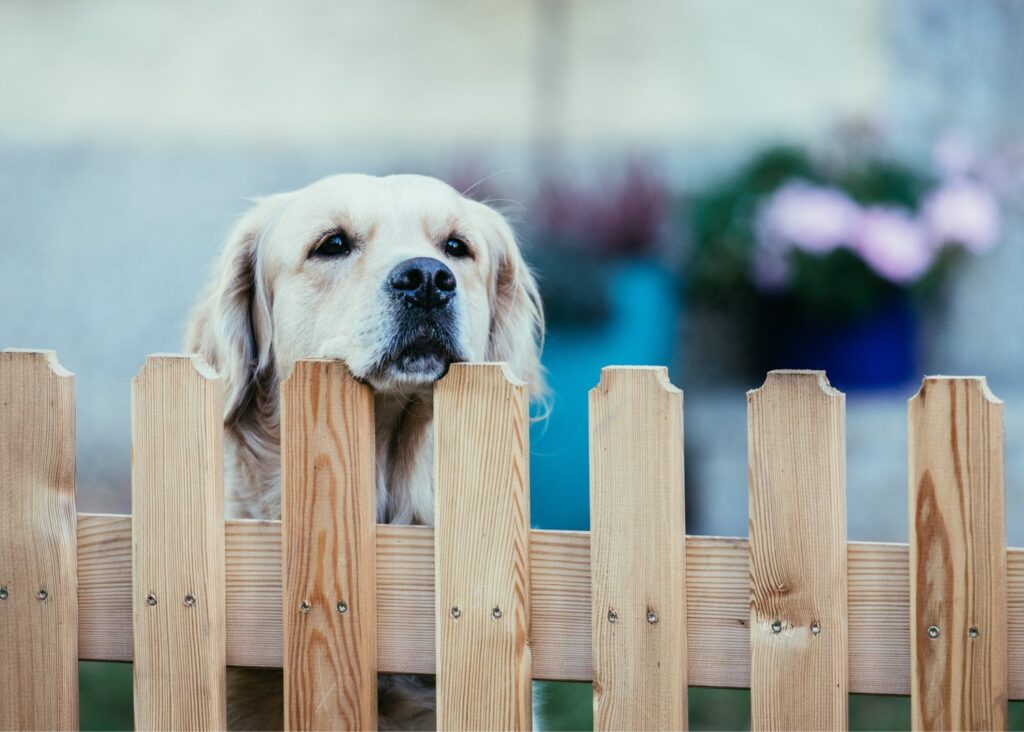Best Fencing For a Dog Run

Best Fencing For a Dog Run:- A dog run is a designated outdoor area where your dog can freely run, play, roll around, and simply enjoy being a dog. These spaces might go by different names like pet area, backyard kennel, or dog potty area, but they all serve the same purpose. Dog runs are designed to keep your dog safe and entertained without constant supervision.
These enclosures not only protect your dog but also prevent damage to your yard or other animals. Regular exercise is essential for keeping dogs healthy and happy. Without it, some breeds may become anxious or destructive, leading them to dig, scratch, or pace out of frustration. A dog run provides a controlled space for your dog to exercise, play, and relieve itself, ensuring your yard stays intact.

However, it’s important to remember that dog runs are not meant to be full-time living spaces. They’re temporary enclosures for safe exercise and playtime, not permanent housing.
Dog Run and Fencing Buying Guide
First, let’s clarify the terminology. In Australia, the term “dog run” is often used broadly. Terms like “dog kennel run,” “dog enclosure,” or “dog fencing” may all refer to the same concept. To avoid confusion, it’s best to stick with “dog run.” However, note that “dog kennel” can sometimes be confused with dog boarding services or dog houses.
Not every dog requires a dog run, but you might need one if:
– Your backyard isn’t secure, and your dog is at risk of escaping or getting hurt.
– You have livestock, small pets, or plants you want to protect from your dog.
– Your dog is exhibiting behavioral issues, and trainers recommend an enclosure as part of the training process.
– Local council regulations require it, such as for racing dogs or certain breeds classified as dangerous.
If council regulations apply to you, especially for dangerous breeds, it’s best to consult a professional fencing company. Requirements can vary, and off-the-shelf solutions might not meet council standards.
Dog parks and dog runs are becoming increasingly popular as most cities now enforce leash laws in public spaces. These designated areas provide a safe place for dogs to run freely, exercise, and play without restraint. When designing a dog park or dog run, it’s essential to review local building codes, but generally, your design should include a fence with the following features:

Material
Galvanized or vinyl-coated chain link fences are an excellent choice because they can be buried to prevent dogs from digging under. Steel fences are often used in urban areas where the dog park is adjacent to buildings.
Height
To ensure safety, fences should be at least 5 feet tall to prevent dogs from escaping.
Multiple Access Points
It’s crucial to install self-closing, lockable gates with a transition area (or corral) to minimize the risk of dogs escaping. Additionally, having a separate maintenance entrance is important for ease of upkeep.
Multiple Fenced-In Areas
To accommodate dogs of different sizes, consider creating separate spaces for large and small dogs. A well-designed fence system can enhance both safety and enjoyment in the park.
Types of Fencing for Dogs
Wooden Fences
Wooden fences are ideal if your dog tends to bark or growl at people passing by. A solid wooden fence (without slats) can block the view of the street or neighboring yards, reducing visual stimulation and hopefully limiting your dog’s noise. This is particularly useful for excitable dogs that need privacy in their space.
Chain Link Fences
Chain link fencing, also known as cyclone fencing, is an affordable and low-maintenance option for dog runs. Although see-through, you can obscure your dog’s view by training vines or weaving plastic strips through the gaps to reduce noise and distraction.
Vinyl Fences
Vinyl fences offer durability, withstanding splitting, warping, rusting, or rotting. Vinyl is five times stronger than wood and more flexible, making it a great option for larger dogs that may jump or put pressure on the fence. Its longevity and resilience often come with generous warranties, making it a smart investment for dog parks.

Choosing the Right Fence for Your Dog
When considering the best fence for your yard, it’s important to think about how your dog spends their time outdoors. A fence should not only look good but also provide privacy and safety for your dog based on their habits and activity level.
If your dog is more of a sunbather, lounging peacefully rather than chasing after wildlife or barking at passersby, you may not need a particularly high or sturdy fence. For dogs that enjoy sniffing around but don’t tend to follow scents aggressively, a simple, moderate-height fence may suffice.
However, if your dog is energetic and loves chasing squirrels, birds, or other animals, fence strength and height become crucial. A dog that loves to pursue prey might attempt to jump over, dig under, or push through a weak fence, so you’ll need something strong and tall enough to prevent escapes.
For particularly protective dogs who are on high alert in the yard, a sturdy gate is essential. If your dog perceives someone as a threat, they might try to get past the barrier to reach them. To ensure your dog can’t jump over or dig under, consider installing a tall fence with secure bottom barriers.
Finally, if your dog is an escape artist with a passion for digging, jumping, or squeezing through small spaces, a durable, escape-proof fence is a must. A solid structure with strong materials and additional ground-level reinforcements will help keep your dog safe and secure.
Also Read:-




